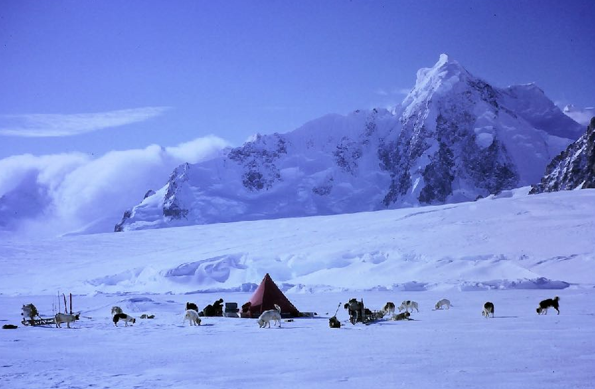Header Photo: Bruce Herrod
The Storm
The night of November 18th 1981, during a storm with gusts registering 100 mph, both aircraft on the airstrip above the base broke loose from their tethers and turned over resulting in very significant damage. Initial reactions of disbelief and scepticism of practical jokes turned into shock and despair when the pilots and air mechanics came back down from the strip to confirm the news. The wing tethers detached, leaving the rope secured to the nose to act as a ‘pivot’ enabling this rotation.
Bruce wrote:

“The bombshell has dropped and dashed all our hopes to smithereens: winds gusting 73 knots and averaging 50-60 knots from NE to NW; driving snow. On Thursday, after lunch, Gary Studd and Paul Gomez visited the strip during the first lull in what has been quite a violent storm. They met with scenes of total devastation. Both (DeHavilland) Twin Otters were found lying on their BACKS, wings broken and twisted, fuselage bent and sheared near tail. A truly unreal wind must have lifted the planes, broken the tie-downs (strength around 8,000lbs!) and flipped the aircraft end over onto their backs. This means, no less, the end of this year’s field season at one blow and the frustrating thing is that there is not a thing we can do. It’s no one’s fault. There’s no remedy; no plan of action. We were all a bit stunned and, frankly, amazed that such a thing could happen”
The aircraft are designed for Short Take Off and Landing (STOL) at low air speeds. The records from the airstrip anenometer showed gusts veering dramatically with gusts from different directions at speeds at which the aircraft are designed to take off. With the benefit of distant hindsight, it is perhaps understandable that they tried to take off while tethered.
The Response
After the initial shock and denial, the response was generally positive. On the following night, perhaps predictably, there was a couple of nights of immense boozing. On one of these nights one of the pilots did not get to bed until 7am – an important part of the adjustment process. For some, a light hearted atmosphere descended with the recognition that all scientific responsibilities had disappeared overnight.
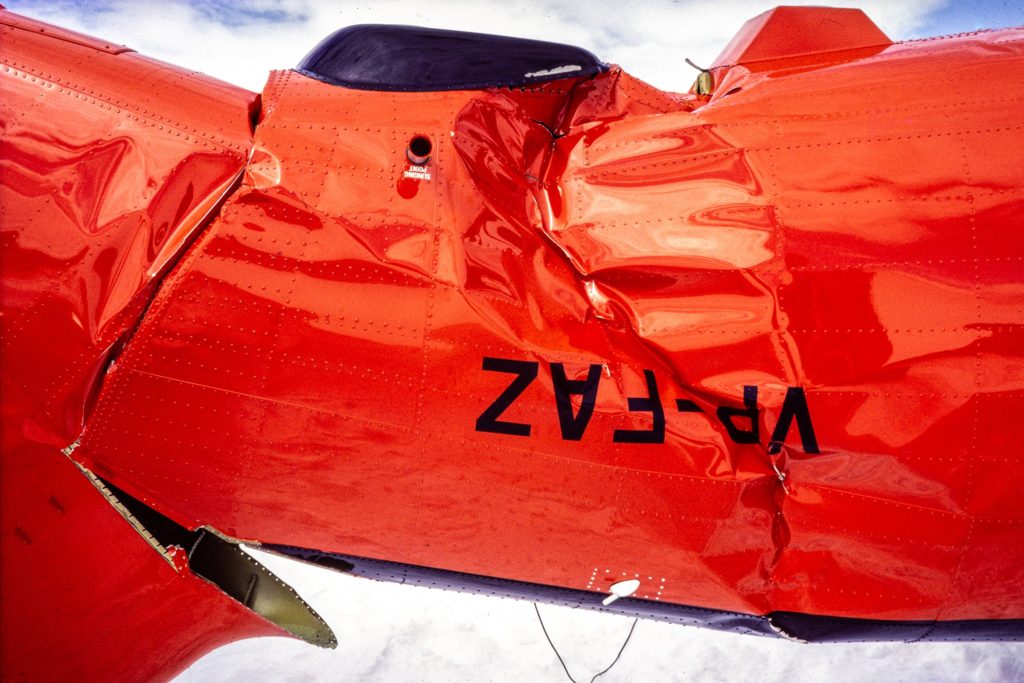
Some people were noticeably negatively affected, especially the pilots, and the chief pilot most of all, who sat in the operations room as though he could not believe it – the planes were his babies and the shock showed. For some the negative impact was compounded when added to the fatal sledging accident overwinter when John H M Anderson and Robert Atkinson lost their lives on 16 May 1981 on the Shambles Glacier. There had also been significant physical (‘lurky liver’) and mental illnesses affecting other base members which required the medical evacuation of three over-winterers via Damoy at the start of the summer season. One of the understandable immediate reactions to wonder if the base would ever see good fortune, although that gloom dissipated over a couple of days.
As shock and negativity receded it helped to get busy. As Bruce wrote:
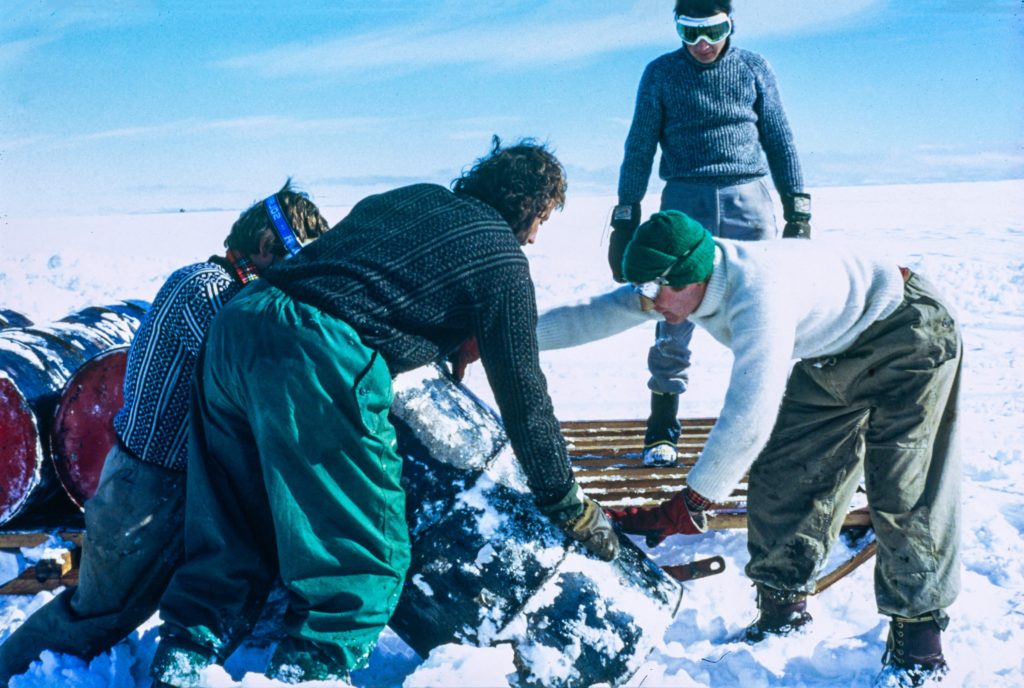
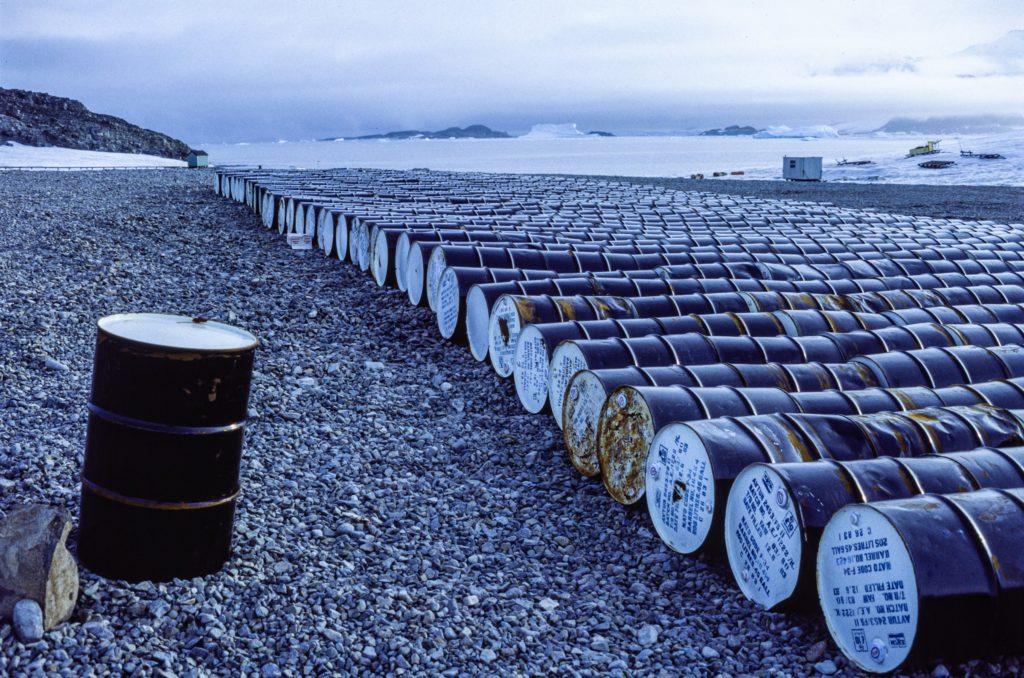
“The Air Unit are busy tied up with dismantling the two aircraft – a lengthy, time-consuming job. Each time they visit the aircraft they have to dig out the bit they want to get at as it is all badly drifted up. The last three days have seen a reverse drum roll, bringing down from the strip 500x 45-gallon drums of (aviation fuel) so that they don’t get drifted up to over five feet for next year.”

The Impact on People
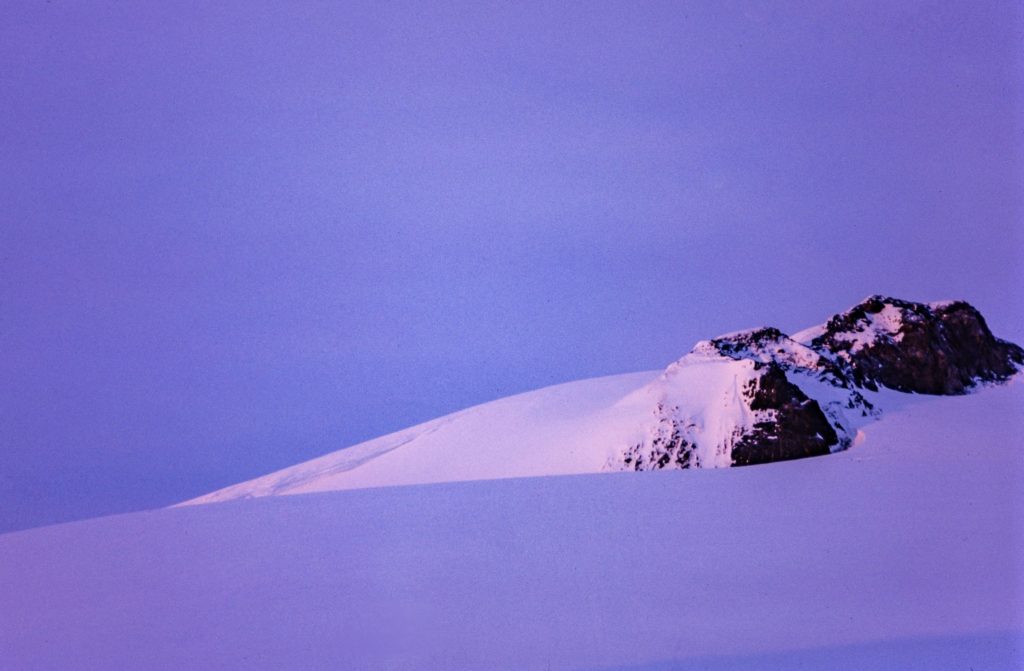
The incident had happened during the Damoy airlift. So Jim Turton, John Hall, Rudy Bramwell and John Potter were stranded at Damoy for several weeks waiting for the Bransfield to pick them up.
For me, the immediate impact as a geophysical ‘spare part’ was that I was put on night watch. I enjoyed having the place to myself after the drama, marvelling in the spectacular evening/morning light show on the mountains, and expanding my musical world in the company of Pablo Casals, John Coltrane, Peter Gabriel and John Martyn.
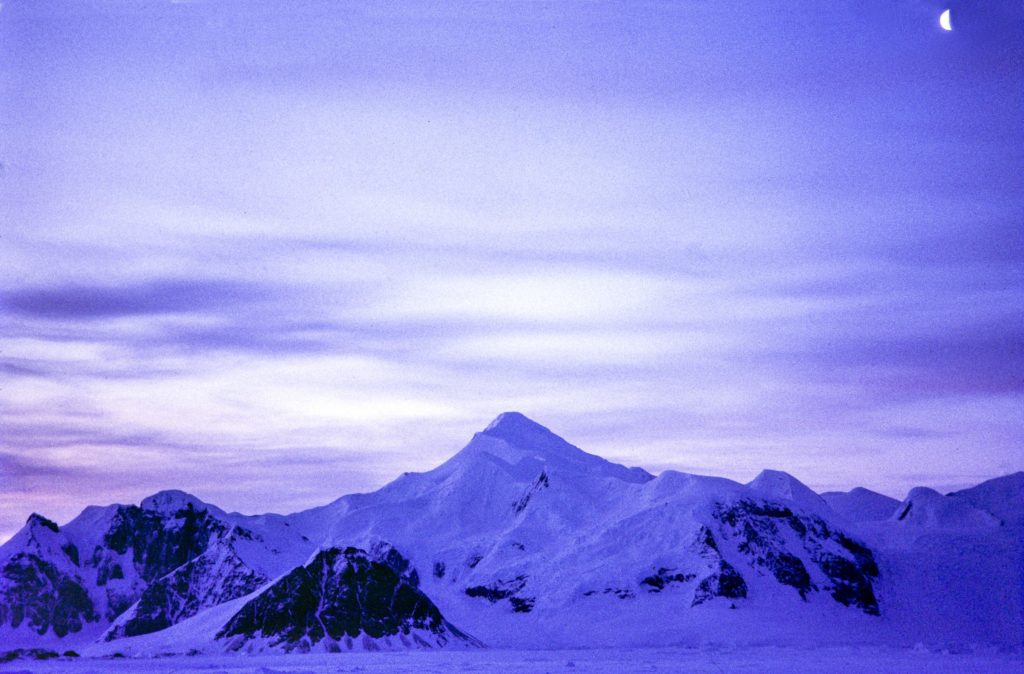
Those of us from the Ronne party fortunate to be at Rothera were then able to go sledging on Adelaide Island to test out the geophysical equipment and procedures on the Fuchs Ice Piedmont for the following seasons’ work on the Ronne Ice Shelf. This included the technological innovation of a Magnavox marine satellite navigator. As I was at a loose end – my job was airborne surveys – I was able to tag along with the land party (Nigel Young, Ash Morton, Bruce Herrod, Bill Perry, Simon Stephenson) to get some field experience. Bruce wrote – ‘Ash, Bill and Steve always took longer than our tent group to get going at any time, though they certainly did well’. Fair enough.


As RRS Bransfield was unable to make it to Rothera through thick pack ice, we were airlifted to the Chilean base Presidente Eduardo Frei to board RRS Bransfield. This was followed by extended trip home with a grand tour encompassing Punta Arenas, Stanley, South Georgia, an abortive attempt to reach the Ronne depot, Halley, Signy, Mar Del Plata and Buenos Aires – perhaps the last time BAS staff would transit via Argentina.
This would also have introduced significant stress for BAS staff in Cambridge. In particular, I recall the head of Earth Sciences, Charles Swithinbank, having a heart attack around this time, which may have influenced by his concerns about the future of BAS fieldwork given the significant cost (in millions of pounds) of replacing the aircraft.
The Impact on BAS
One of the questions on base in the immediate aftermath of the incident was ‘What will happen to BAS now?’ The management response to this incident leveraged the political attention and influx of cash to BAS resulting from the Falklands War. Two immediate replacements were bought for the next season (FP-FBB and FP-FBBC). VPFA-W was damaged beyond repair. The damage to VPFA-Z was less severe so it was repaired using parts from the other plane, returning south in 1983 (https://www.twinotterworld.com) bringing the complement to three Twin Otters. In the longer term, this incident may have contributed significantly to a compelling case for Rothera’s hangar and hard runway close to sea level which was realised a decade later.
Steve Garrett – Geophysicist, Rothera 1981, 1982, 1983
